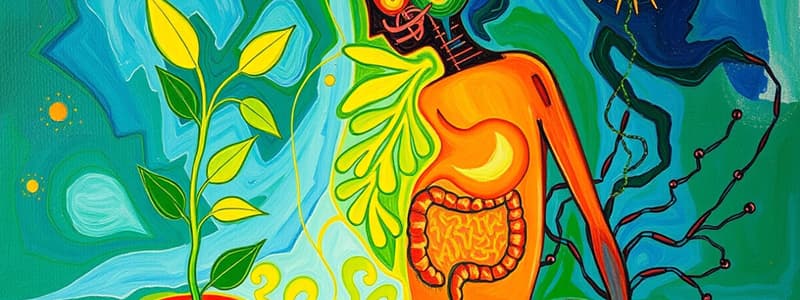Podcast
Questions and Answers
What do plants get energy from?
What do plants get energy from?
Manufacturing glucose during photosynthesis
Gases pass into plants through the ______ in leaves.
Gases pass into plants through the ______ in leaves.
stomata
What must humans do to get energy?
What must humans do to get energy?
Eat food
How does air enter the human body?
How does air enter the human body?
What is the primary function of the human circulatory system?
What is the primary function of the human circulatory system?
What are the main components of the human circulatory system?
What are the main components of the human circulatory system?
How many chambers does the human heart have?
How many chambers does the human heart have?
What type of blood do arteries carry?
What type of blood do arteries carry?
What do veins carry back to the heart?
What do veins carry back to the heart?
What are blood capillaries?
What are blood capillaries?
Flashcards are hidden until you start studying
Study Notes
Plants
- Require water and air (gases) for survival and growth.
- Manufacture glucose during photosynthesis, which serves as a sugar and primary energy source for growth.
- Stomata in leaves allow gases to enter the plant, facilitating photosynthesis.
Humans
- Obtain energy by consuming food, which is chewed, swallowed, and digested.
- Digestion converts food into nutrients that are absorbed into the bloodstream.
- Air is inhaled through the nose and mouth, traveling to the lungs where oxygen enters the bloodstream.
Human Circulatory System
- Transports oxygen and nutrients via blood to body cells.
- Comprises the heart and blood vessels.
Heart
- Functions as a pump, circulating blood to body cells and receiving it back.
- Contains four chambers:
- Two atria (upper chambers)
- Two ventricles (lower chambers)
Blood Vessels
- Arteries:
- Carry oxygen-rich and nutrient-rich blood from the heart to body cells.
- Veins:
- Transport carbon dioxide-rich and nutrient-poor blood back to the heart, then out to lungs for oxygenation.
- Blood Capillaries:
- Microscopic vessels connecting arteries and veins, exchanging nutrients and waste at the cellular level.
Blood
- A fluid that circulates in one direction between arteries and veins, ensuring efficient transport of oxygen and nutrients.
Studying That Suits You
Use AI to generate personalized quizzes and flashcards to suit your learning preferences.




